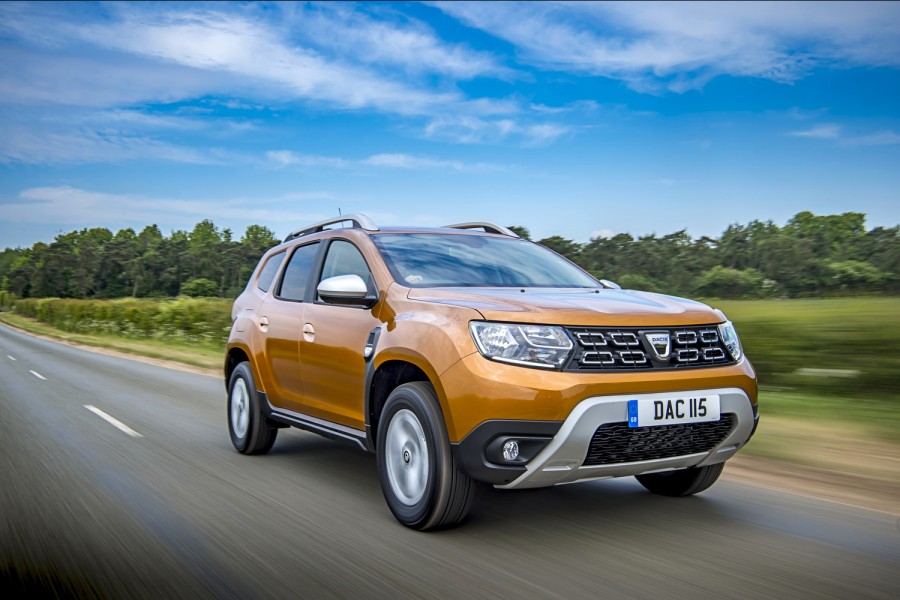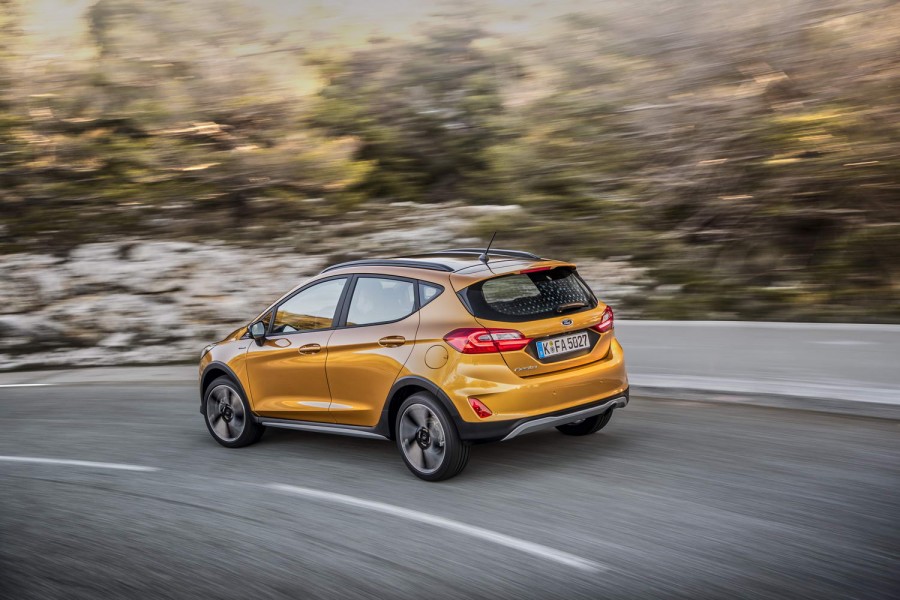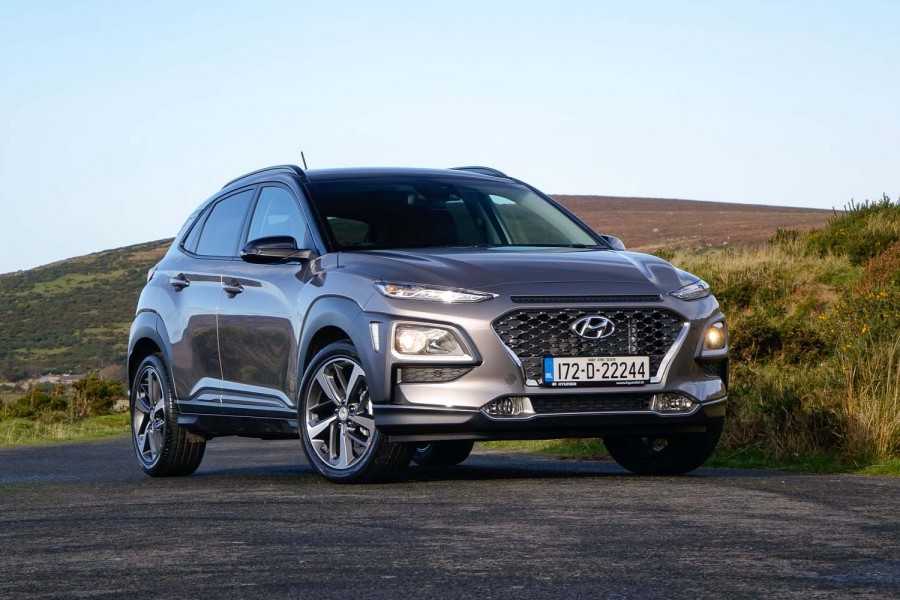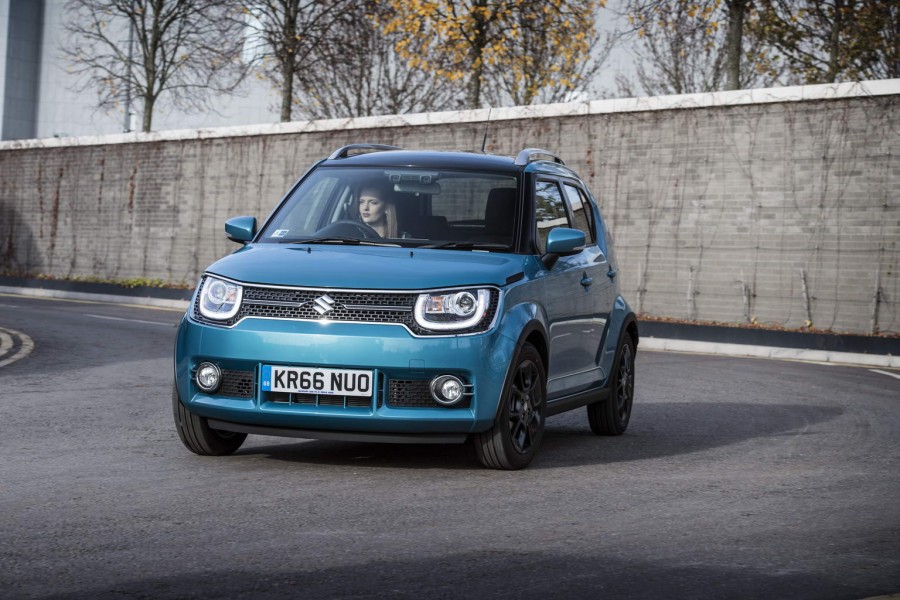Dacia overhauls its popular Duster SUV, giving us the second generation of this price-busting off-roader in the Renault era of the brand's ownership. New looks, more equipment and a promise of some extra refinement for the package are all most welcome, but thankfully the Duster retains its robust value (or should do), meaning the Romanian vehicle will cost you about the same as a decent city car, even though it's a mid-sized crossover. And as it has been well-engineered for its price point, then the Duster proves itself to be a truly likeable thing.
In the metal
Afford the all-new Dacia Duster only a casual glance and you'll think not much has changed in the evolution from the first-generation model to this second-gen vehicle. Look, it has the same 'three-piece' headlights. A similar clamshell bonnet shutting flush to the grille, which has eight oblong markers in it. There are bulging wheel arches. Some distinctive roof rails. Three panes of glass running along the sides of the Duster and a rear screen with rising corners in its lower edges. A 'Duster'-emblazoned bar of black plastic above the licence plate on the tailgate. Really, the only obvious difference you'll pick up on if you're conducting a brief walk-around of the SUV are those 'rounded-square' rear light clusters, which are somewhat evocative of the items found on the rump of a Jeep Renegade.
However, allow us to surprise you with two things. The first is that the new Duster shares not a single body panel with the old one. Not even the roof, nor the door mirrors. Absolutely everything is remodelled on it, a point that becomes evident when some fancy transmogrification graphics in Dacia's press conference reveal the true extent of the changes as the Mk1 morphed into the Mk2. Some points to note here, that you might now clock once you're armed with the information: the front lights are pushed further apart to emphasise the car's width, while the bonnet is more sculpted than before; those silver skid bars front and rear are totally different to the Mk1's; the black plastic detail aft of the front wheel arch is born of necessity, because elongated front doors now mean there's less room between the trailing edge of that muscular wheel arch and the leading shut line of the door, so fashioning the Duster's front wing entirely out of metal simply wasn't possible; all of the rear screen, that 'Duster' bar on the tailgate and the roof rails might look like their outgoing comparable components, but they're not; and there's now also the option of 17-inch alloys on top-spec models, when the previous Duster had nothing bigger than 16s.
And the second thing we wanted to surprise you with was how good the Mk2 Duster looks in the metal. While it is obviously still Dacia's cut-price SUV, there's more of a sort of 'premium' air to the way it stands, especially in the launch colour of Atacama Orange. It looks every bit as handsome and solid as anything from the Nissan Qashqai's market segment and should win Dacia even more conquest buyers from other brands as a result.
Inside, it remains primitive compared to rival vehicles of the same type, with a huge expanse of rhino-skin-like black plastic forming much of the surfaces, the instrument cluster dominated by a simplistic digital display between the analogue dials and the now-touchscreen infotainment looking small and basic in this day and age. However, the general quality of the way every piece of switchgear operates is improved noticeably, Dacia talks of masses of extra sound-deadening material and revised chassis plugs to improve road noise on the move and there's no doubt it's as spacious and practical as it ever was - five adults on board and a load of stuff in a huge, well-shaped 445-litre boot would be entirely feasible.
Driving it
Dacia will launch the Duster Mk2 with two engines, both delivering 115hp. One is a 1.6-litre normally aspirated four-cylinder petrol unit, badged SCe, and the other is a 1.5-litre turbodiesel called the dCi. That means the latter comfortably wins the torque war, rocking in with 260Nm of the stuff available from just 1,750rpm; the SCe has a rather more meagre 156Nm at 4,000rpm and so is nearly a second-and-a-half slower to 100km/h than its diesel sibling, while it's also more than 20mpg down in terms of the official combined economy.
Both of these 115hp models come with front-wheel drive as standard, but the SCe can be paired to selectable all-wheel drive in the solitary AWD Duster Mk2 (for now). If this is chosen, two things happen: the SCe's five-speed manual gearbox gains an extra ratio, to match the dCi's ratio-count of six; and the torsion beam rear suspension of the front-wheel-drive Duster is replaced with a more sophisticated multilink trailing axle (this marginally cuts into the Dacia's ultimate load-lugging capability, rear seats up or down).
After these three launch models arrive, the 1.5 dCi gains a four-wheel-drive option later this year, before a 130hp TCe turbocharged petrol model (in both front-wheel drive and 4x4 guises) turns up at the start of 2019. No confirmation as yet, but the EDC automatic gearbox, introduced late in the old Duster's life cycle, is also likely to make an appearance on right-hand-drive Mk2s at some stage.
We spent all of our time on road in a high-spec, front-drive Duster SCe, with a brief sojourn in a dCi 4x4 thrown in for good measure. And, in terms of both ride comfort and rolling refinement, there's no doubting the new Duster is better than its predecessor. The 1.6 petrol engine, while not particularly gutsy, is smooth and is mated to a fine, slick five-speed manual gearbox with well-spaced ratios. The Dacia also does well dealing with most mediocre road surfaces, although very big compressions (especially with the suspension loaded up, i.e., during cornering) will get the rear end of the SUV skipping about a bit. And wind noise is limited to a reasonable level; maybe not to the point of silence, but more than you were expecting on what is, at the end of the day, still a budget machine.
In fact, much of what the Duster does is very good. Nothing is outstanding, of course, but that's how the brand sets itself up: no-nonsense. Thus, the steering is light and precise enough, without being spectacular. The brakes are pleasantly modulated. Body control is of a more than acceptable level, with quite noticeable lean in corners, but never the feeling that the shell of the Duster is getting away from its underpinnings. Overall, the handling is good.
And the SCe engine is even a willing enough performer that it seems just about spot-on in the Dacia, mainly because the whole thing only weighs 1,179kg; no, it's not the quickest thing in the world, and yes, it needs some thought to keep up with traffic on the motorway and faster dual-carriageways, and yes, if you rev it out then between 5,000- and 6,000rpm, it sounds and feels wheezy. But you can enact two-way-road overtakes in it without such manoeuvres being laden with abject terror, and the engine has enough pep to make the Duster fairly brisk in town and on slower main roads. It's also very muted until about 3,000rpm, the point at which most owners are sure to shift up.
Off-road? Off-road, the Duster feels very strong. It's clear the extra torque of the diesel is going to make it preferable to most people as a road conveyance, not just a mud-plugger, but we can't yet talk with any authority about what its multilink rear suspension will do to the ride quality. However, with Hill Descent Control and a lockable four-wheel-drive set-up, the Duster can perform some quite serious axle articulation, gravelly ascents and descents and ploughing through quagmires, without feeling as if it is going to break at the first sign of trouble. Indeed, we'd say it's far more capable off-road than it has any need to be, which is a nice bonus.
What you get for your money
Irish specs and prices are yet to be confirmed, but it's very likely the circa €17,000 starting value for a decent-spec Duster will be on the cards, making it a huge chunk of cash cheaper than similarly-sized vehicles.
Equipment levels are improved too, so there are items like climate control, an all-round-view camera, blind spot detectors, a reversing camera and more on the spec sheets (albeit near the top of the trim grade tree), although it is worth pointing out the new Duster received a middling three-star Euro NCAP safety rating in 2017 (it was launched in left-hand-drive markets some time back), as it lacks for some top-end driver assist safety systems.
Summary
Unprepossessing excellence, that's what the Dacia Duster Mk2 encapsulates. There's nothing showy about this reasonably large crossover-SUV but, conversely, there's no feeling that if you bought one, you'd be forever making excuses to your neighbours as to why you couldn't afford something a bit better.
Because this is all the SUV you could ever need. It has a plain but spacious cabin with a pleasing smattering of toys, a very decent all-round set of dynamic characteristics and it actually looks pretty good on the outside, too. Factor in its likely super-budget pricing (once confirmed) and it's easy to see why people are increasingly switching on to this brand, because vehicles as superb and unpretentious as this deserve the widest possible audience.















































